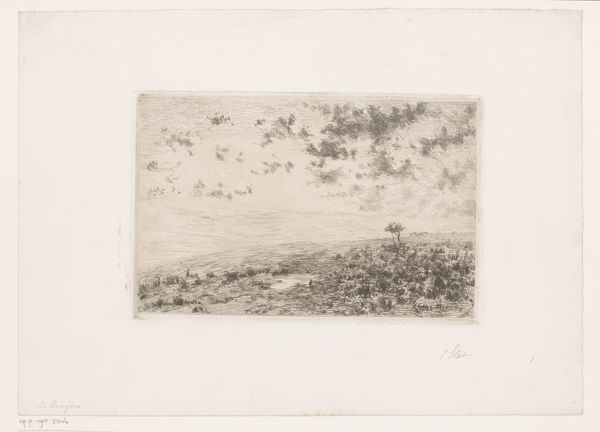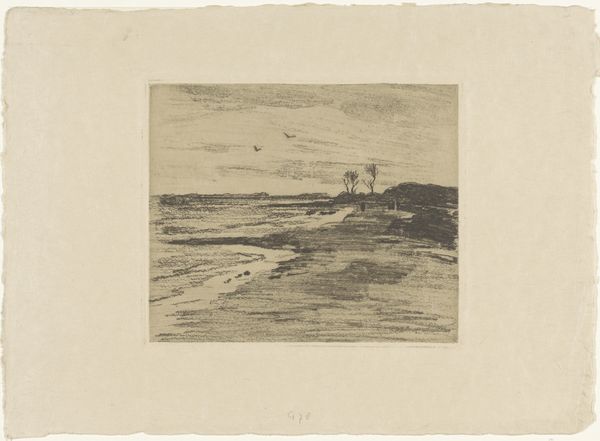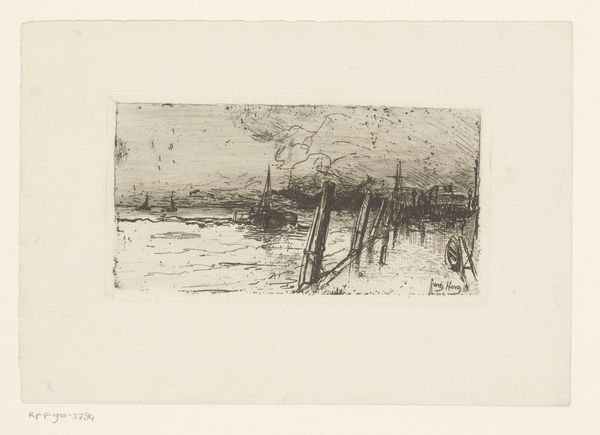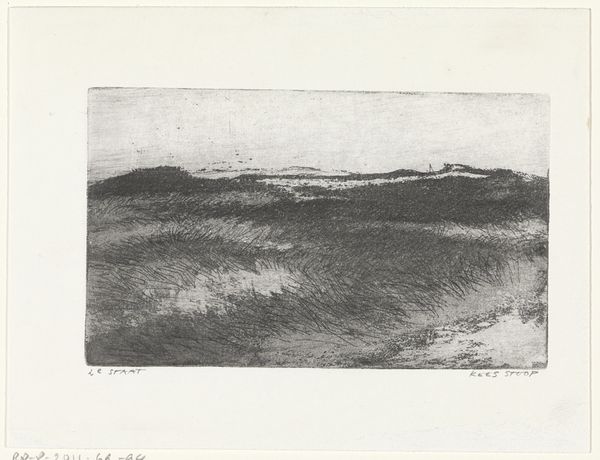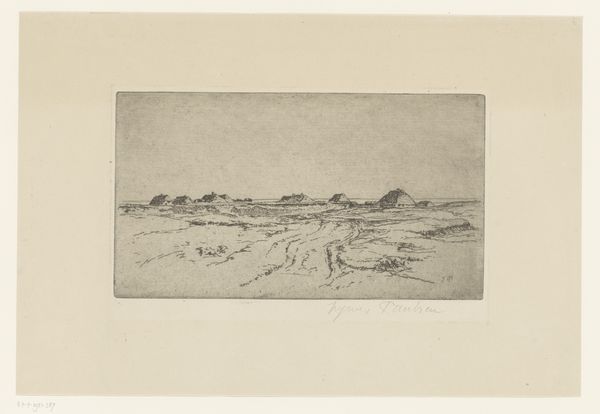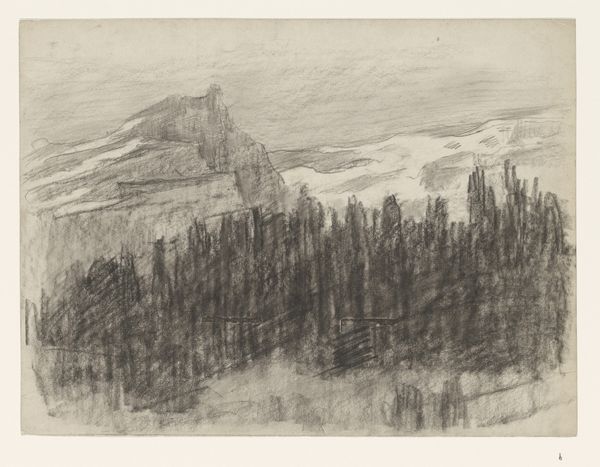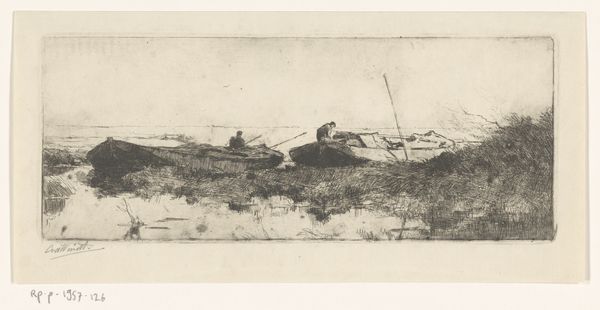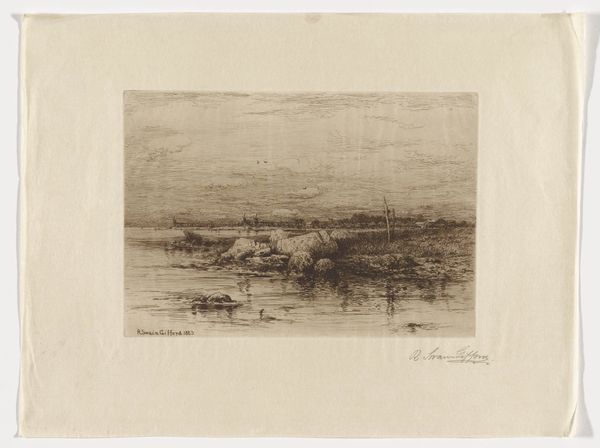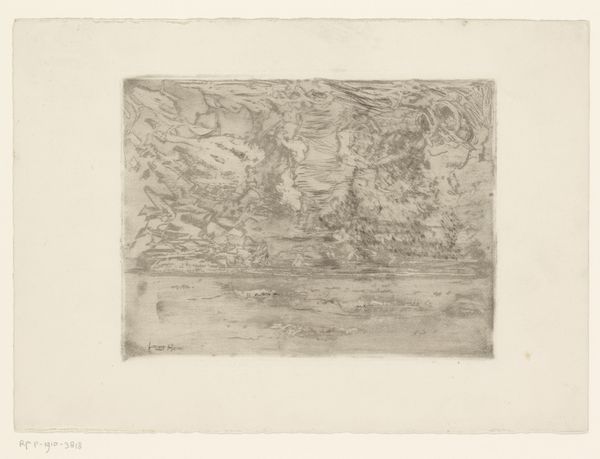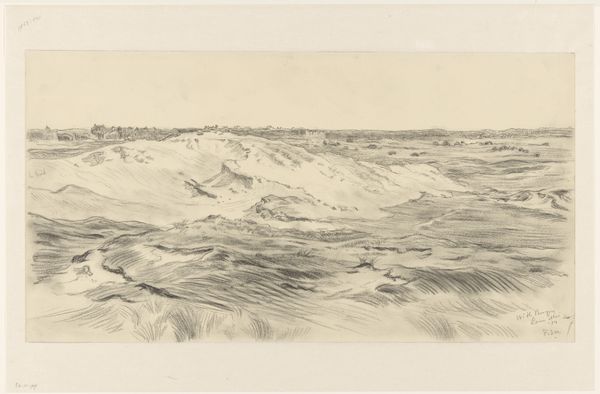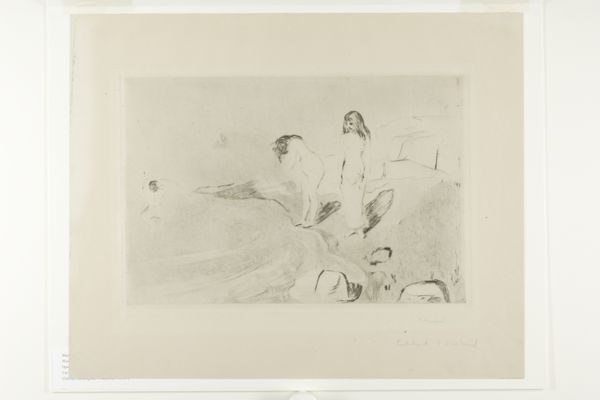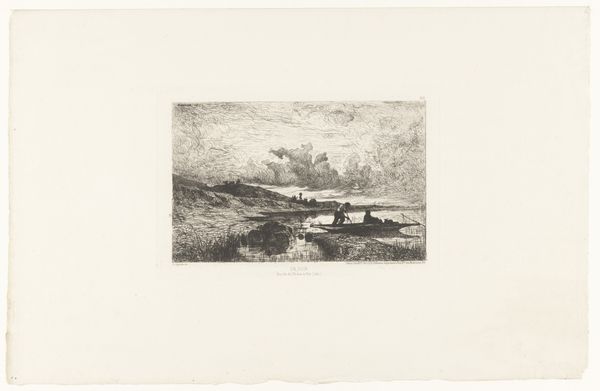
print, etching, paper
# print
#
impressionism
#
etching
#
landscape
#
paper
Dimensions: height 180 mm, width 259 mm
Copyright: Rijks Museum: Open Domain
Curator: Before us is Norbert Goeneutte’s “Gezicht op de monding van de Seine bij Quillebeuf,” an etching from 1890 currently housed in the Rijksmuseum collection. Editor: There's a stark stillness to this. The composition is immediately striking; the eye is led from what appears to be a foreground of sketched-in ground cover back into an expansive yet muted estuary. Curator: Absolutely. The Impressionistic style captures the transient effects of light and atmosphere on the Seine’s estuary. Consider, too, how this landscape participates in discourses of late 19th-century industrialization and leisure. Quillebeuf, at the river’s mouth, was not just a site of natural beauty. Editor: Note the sparse, almost skeletal application of line—especially in the depiction of what may be distant figures on the shore. This creates a sense of ethereal distance. It isn’t hyper-real but more suggestive. I feel like I'm looking at memory. Curator: That sparseness is evocative, suggesting the fleeting nature of the moment. Goeneutte was exploring ways of picturing lived experiences amidst rapidly shifting environmental and social realities, including, notably, those of working class individuals on the fringes. These are impressions of social change on the Seine. Editor: But is that suggestion due purely to context, or inherent in the technique itself? The way the etching captures subtle gradations of light and shadow really enhances the visual rhythm. There's an elegance of balance and line, giving rise to such palpable depth of space. Curator: A beautiful interplay of aesthetics and history. Examining this work through both form and contextual lens enables one to see it as not only beautiful but revealing of cultural shifts taking place at the time. Editor: Precisely! Dissecting form allows one to intuit narrative. It reveals a new visual poetics in the industrial age. Curator: By bringing social history and aesthetics together, we can better understand an artwork's full communicative impact. Editor: I’m now more aware of the balance and how Goeneutte utilized specific strokes and spatial dimensions. Thank you.
Comments
No comments
Be the first to comment and join the conversation on the ultimate creative platform.
